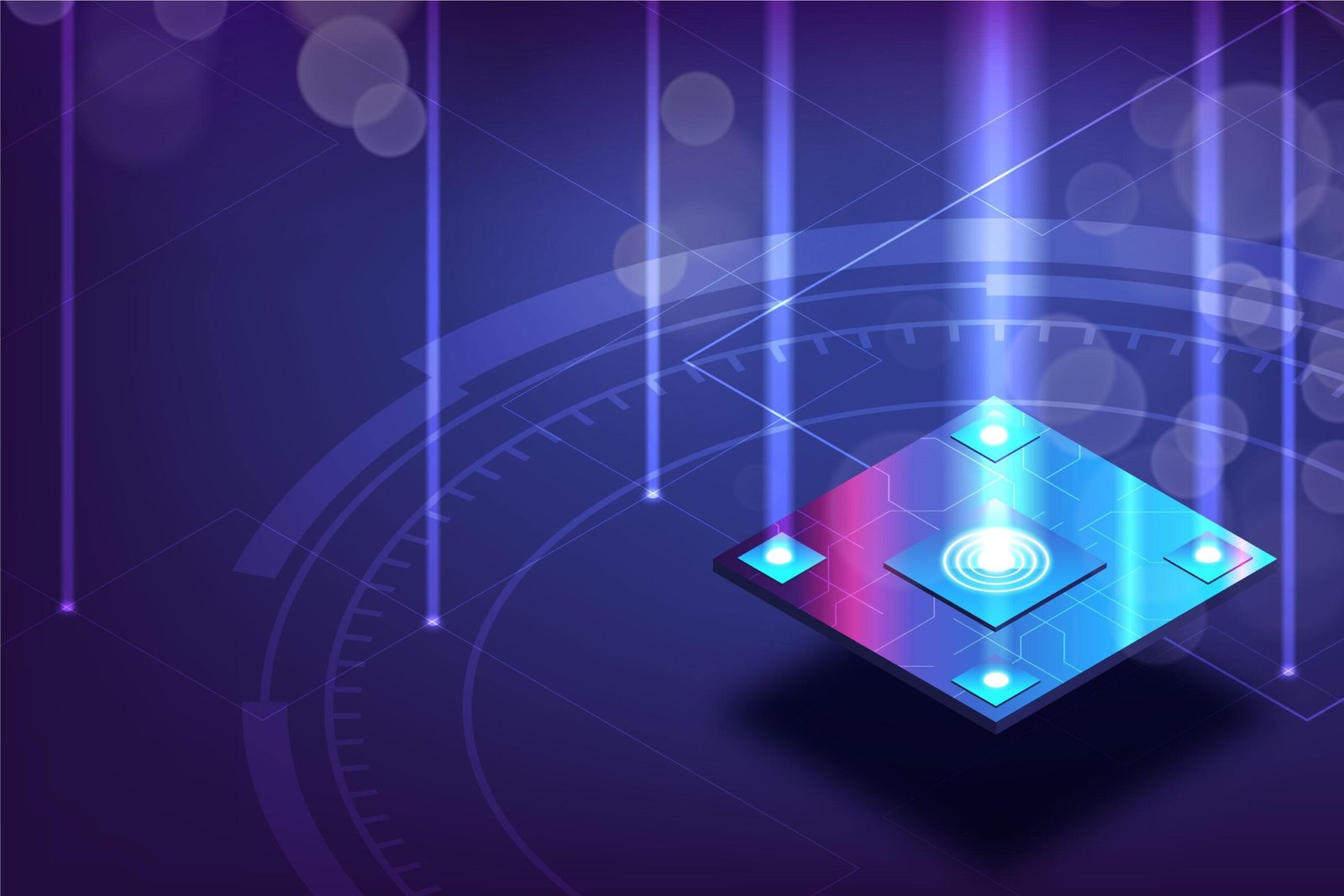
Understanding Electromagnetic Interference in LiFi Systems
What is Electromagnetic Interference? Electromagnetic Interference is one of the main threats for steady wireless connections and is quite a complex concept.

Categorized as a disturbance in an electrical circuit, the Electromagnetic Interference (EMI) definition, also known as Radio Frequency Interference (RFI) in the radio frequency spectrum, is when an external source interrupts a connection in an electrical circuit by electromagnetic induction, conduction, or electrostatic coupling. These occurrences are largely due to energy transfers, magnetic or otherwise, that are incompatible, and can produce system errors that put data and wireless connections at risk. With traditional WiFi systems, EMI is an increased concern, as these systems rely heavily on the radio frequency spectrum. LiFi is an emerging technology that seeks to mitigate this challenge.
Introduction to LiFi Systems
LiFi, or Light Fidelity Technology, is a wireless communication technology that uses light-emitting diodes (LEDs) to transmit data. Just like WiFi uses radio waves, LiFi utilizes the greater visible light spectrum to send and receive data. LiFi can achieve data transmission rates that function with higher speeds at greater distances by modulating the intensity of light at an extremely high pace. Though a LiFi system can have a certain intrinsic amount of electromagnetic interference shielding due to its use of the visible light spectrum, it can still emit a low level of electromagnetic radiation, namely in the infrared spectrum
Identifying Sources of Electromagnetic Interference in LiFi Systems
The impact of EMI Electromagnetic Interference in LiFi Systems is one of the lowest in wireless technology today; however, external sources of electromagnetic radiation, such as fluorescent lighting, sunlight, and other wireless devices, can introduce amounts of interference into LiFi systems. However, Oledcomm products are developed with a special filter that only lets the desired spectrum for LiFi pass and transmit signals, allowing no other light source’s interference.
In general, EMI can be split into two different categories: ambient EMI and power quality problems.
| Ambient EMI Generated by Man-Made and Natural Sources: | Power Quality Problems that also induce EMI conditions: |
|---|---|
| Arc welders | Electrical noise on a main powerline |
| Computer circuits | Power line faults |
| Solar magnetic storms | Voltage decreases or spikes |
| Lightning | Electrical fast transitions (EFT) |
| Brush motors | Brownouts and blackouts |
| Earth’s magnetic field flux |
Electronic components within LiFi transmitters and receivers, such as power supplies, amplifiers, and drivers, can generate electromagnetic interference if not properly shielded or isolated. Medical and transportation sectors have their own list of application-specific factors that require additional EMI awareness and protection. Threats range from mild to extreme, which is why engineers should assess EMI risks on a case-by-case basis.
Real-world Examples of Electromagnetic Interference in LiFi Systems
Like any wireless technology, LiFi must too mitigate the presence of disruptive interference from electromagnetic waves. Interference is most likely in a lab setting, and Oledcomm products have been developed prioritizing the total removal of interference; however, we find it necessary to discuss the challenges faced in the world of developing LiFi technology by discussing and bringing these challenges to light. Some Electromagnetic Interference examples in LiFi systems can manifest in various ways, including:
-
Reduced Data Throughput: Interference from external sources or nearby electronic devices is an example of how electromagnetic interference affects LiFi signal. It is degraded, leading to lower-quality data transmission rates.
-
Increased Bit Error Rate (BER): EMI has been found to influence data transmission, which could be exemplified in LiFi as incomplete or incorrect data transfers ultimately contribute to a higher BER. Retransmissions therefore, become more necessary. Where time is lost, there is a definite impact on the overall efficiency of the system.
-
Instability and Dropout: Severe Electromagnetic Interference sources, even everyday household objects (hairdryers, electric blankets, microwave ovens), could cause signal instability and dropouts. This example of how EMI interrupts LiFi systems at inopportune times shows the negative effects of dropouts: limited data transmission and a cumbersome user experience.
How to Reduce Electromagnetic Interference
Disruptions in wireless connections can cause ripple effects for miscommunication in wireless systems and communities; however, there are strategies that can be employed to mitigate these effects and help provide a stable and reliable connection.
Electromagnetic Interference Shielding and shielding materials can be used to protect LiFi components from external, disruptive sources. Shielding is a technique developed to help contain emissions and prevent them from affecting nearby devices. Effective materials for the shielding process include flexible metal screens, metal wires, and metal foams. Product designers have been found to coat the interior of an electronic enclosure with metallic inks, utilize particle-silicon, silicon filled with metal or metal-coated particles as strategies for shielding.
LiFi systems approach the topic of how to reduce electromagnetic interference with an innovative perspective. Managing frequencies is an example of this because LiFi systems are able to operate at different frequencies within the visible light spectrum. It is possible to minimize interference from external sources by carefully selecting frequencies and employing frequency-hopping techniques. Fast frequency hopping (FFH) is a strategy that can be applied in scenarios that require greater security. FFH increases the frequency of channel shifting, minimizing the risk of jamming or interference with the connection.
LiFi components are innovatively designed from the ground up with a focus on the integration of grounding and isolation techniques, and are constructed with materials that aid this process. This attention to the design and layout of LiFi components has helped minimize electromagnetic emissions and susceptibility to interference.
Advancements in Electromagnetic Interference Mitigation for LiFi Systems
Since LiFi is a wireless technology that operates on the invisible light spectrum, there are a manifold of innovative, new ways to mitigate the obstructive effects of EMI:

-
Advanced Shielding Techniques and Materials: Electromagnetic Interference filters, shielding techniques, and shielding materials protect wireless systems by blocking electromagnetic radiation. Wireless components may be encased in metal/silicone interference mitigation.
-
Beamforming Techniques: Honing the directness of the beam between access point and receiver can limit the influence of EMI.
-
Multi-Input Multi-Output (MIMO) Systems: MIMO allows for spatial multiplexing in LiFi systems by utilizing multiple antennas to send and receive transmissions. This system spreads the signals, ultimately enhancing its ability to limit interception and interruption.
-
Machine Learning Algorithms: New technologies and machine learning that are able to analyze and predict EMI in various environmental conditions.
-
Hybrid LiFi WiFi Systems: Interoperability of LiFi and WiFi systems allows for users to leverage the complementary benefits of both technologies to take a hybrid approach to EMI mitigation.
Innovations and Future Prospects to reduce EMI
The landscape for electromagnetic interference mitigation is only growing with the increasing demand for seamless connectivity. The market for these reductive technologies is steadily evolving and growing, especially the development of systems that can predict and analyze the behavior of electromagnetic radiation in real time. Simulation and modeling tools for electromagnetic interference detection are under development to do just this - present engineers with access to predictions and information that indicate levels of electromagnetic interference in any given environment.
Electromagnetic Interference is one of the main threats for steady wireless connections and is categorized as a disturbance in an electrical circuit. Electromagnetic Interference (EMI), also known as Radio Frequency Interference (RFI) in the radio frequency spectrum, is when an external source interrupts a connection in an electrical circuit by electromagnetic induction, conduction, or electrostatic coupling.
Since LiFi systems rely on the invisible light spectrum to transmit data, it is found that traces of electromagnetic interference occur in the frequency regions of infrared. The scale of this interruption comes from both natural and unnatural sources, but is significantly less than that which occurs in regular WiFi that operates on the spectrum of radio frequencies.
EMI filters are essentially electronic devices that are meant to suppress or mitigate electromagnetic radiation generated by electronics or electrical systems. EMI filters typically consist of passive components such as capacitors, inductors, and resistors, and in these specific configurations, the components form a network that provides impedance to the unwanted electromagnetic interference while presenting minimal impedance to the desired signals.
Recent articles

Categories
See some more...




